Stretching north from Madrid, north-west Spain's autonomous Castilla y León region is a patchwork of vast mountain ranges, high plateaus and medieval towns. While most visitors come to marvel at the castillo castles that lend the region its name or admire the enchanting cathedrals in León and Burgos, much of the area is blanketed in scrubby sierra and high-altitude meseta plains that extend as far as the eye can see.
But in the provinces of Segovia, Ávila and Valladolid, a drastically different landscape emerges. Here, amid the Tierra de Pinares and Sierra de Gredos mountain ranges, a thick, 400,000-hectare protected forest of fragrant resin pines stretches up into the mountainous folds. Shielded from the hot Spanish sun and lined with trails and, this forested frontier is a popular hiking destination for locals and tourists. And, if you visit at the right time of year and look closely, you may see workers crouched next to the tree trunks, continuing a centuries-old tradition of collecting the pine's "liquid gold".
Story continues below
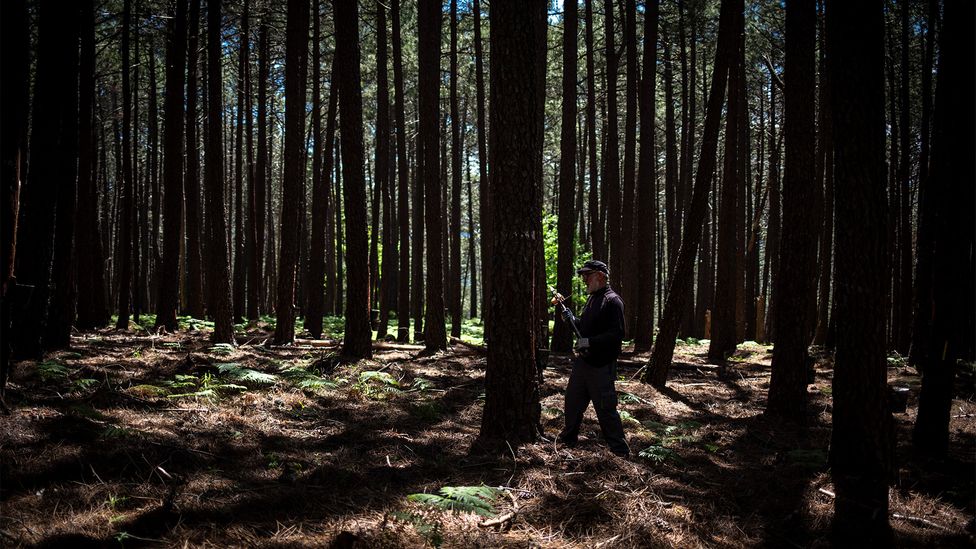
Deep in the forests of Spain's autonomous Castilla y León province, workers carry out the age-old practice of resin tapping (Credit: Susan Girón)
A booming market
Pine resin has been used by different civilisations for thousands of years. In Spain and across much of the Mediterranean, it was used to waterproof ships, treat burns and light torches, among other things. But according to Alejandro Chozas, a professor in the forestry engineering department at Madrid Polytechnic University, it wasn't until the 19th and 20th Centuries that the extraction of pine resin became truly profitable in the Castilla y León region.
As technology and industrialisation helped turn the thick, milky sap into things like plastics, varnishes, glues, tyres, rubber, turpentine and even food additives in the mid-19th Century, the owners of Castilla y León's dense Pinus pinaster forests saw an opportunity. Soon, workers were hacking into the bark of resin pines across the region in order to collect the valuable sap. And while this time-consuming process has now ceased across much of the world, in the past decade it has experienced something of a rebirth in Castilla y León, which is home to more resin manufacturers than anywhere else in Europe and one of the last places on the continent where the practice persists.
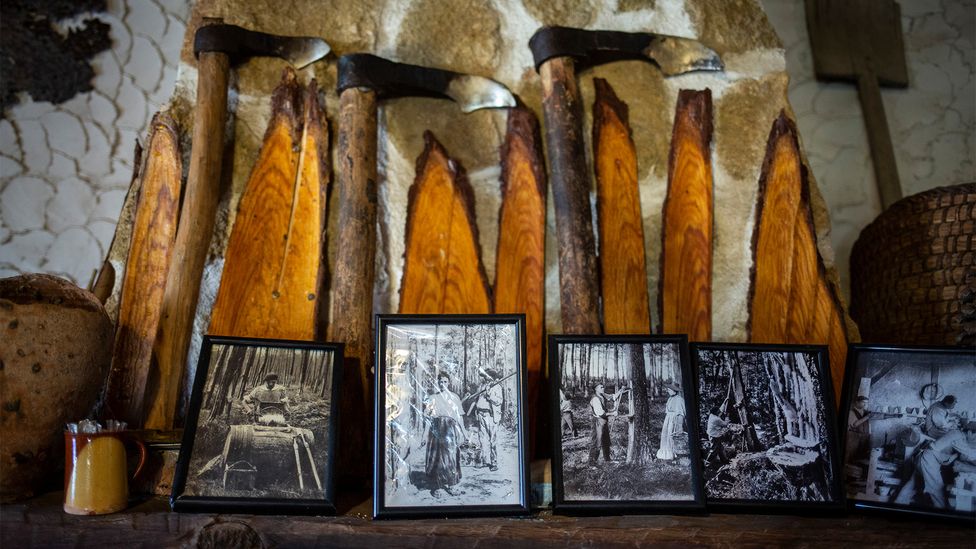
Today, many families in the region proudly display old pine resin extracting tools and photographs of their relatives "bleeding" the trees (Credit: Susana Girón)
From "death" to life"
Mariano Gómez, was born in the Ávila province and worked for 32 years as a pine resiner. "My father was a resin producer and I learned from him. In the beginning, I used lumberjack axes, but my hands would get very sore with them. Today the tools are better designed for each task, [but] they are [still] manual," he said. Gómez and many other locals keep ancient resin axes and tools that belonged to their ancestors in their homes.
Despite the extraction process remaining practically unchanged since the industry began, current resin manufacturers have developed more efficient and ergonomic tools, as well as chemical products that stimulate resin secretion. As a result, yields and productivity have greatly improved. Yet, while the focus for workers in the past was to extract the trees "to death" with highly aggressive methods, there has since been a shift to "to life", which minimises the number of incisions to the bark and reduces the damage to the tree.
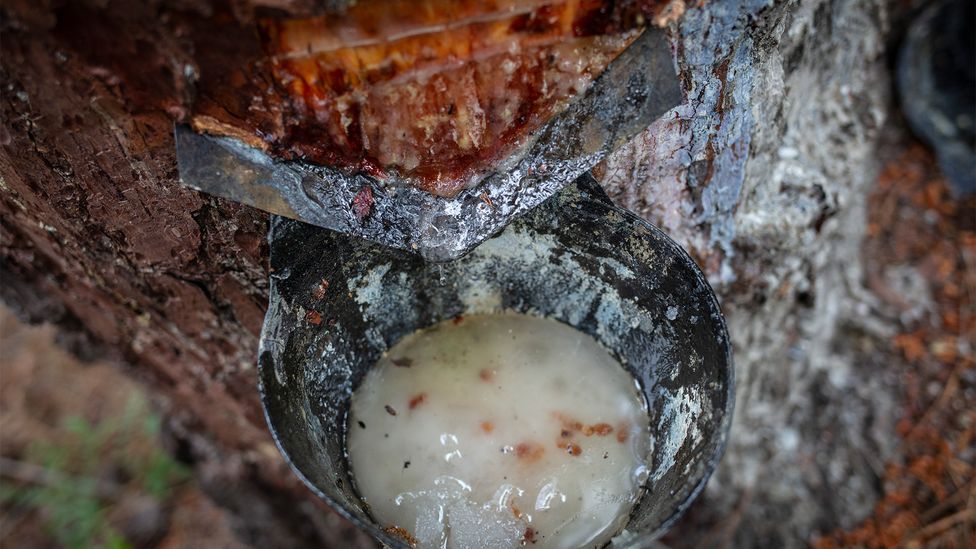
The thick, milky-white sap of resin is used to make things like plastics, varnishes, glues, tyres, rubber, turpentine and even food additives (Credit: Susana Girón)
"Bleeding" the trees
In the warmer months of March to November, local producers carefully extract resin from the pines by first stripping away the outer layer of the tree's bark. Then, a plate is nailed onto the trunk and a collector pot is hooked on it. Next, extractors use their axes to cut diagonal incisions into the bark, "bleeding" the trees and causing its resin to seep into the pot. When their pots are full, they pour the sap into 200kg containers.
Producers then send the containers to factories to begin the distillation process, which extracts the resin's turpentine. When the liquid turpentine is removed, it develops a viscous and yellowish appearance that solidifies when it cools and turns into shiny, amber-like stones.
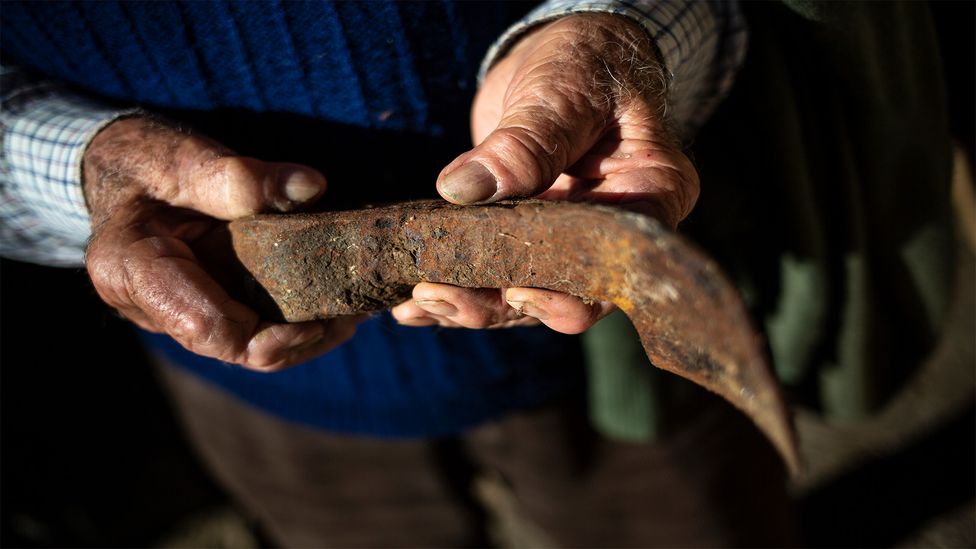
The practice and tools of resin extraction were often passed down from generation to generation (Credit: Susana Girón)
Local pride
During the peak of Spain's pine resin extraction in 1961, when 55,267 tons of resin were extracted, more than 90% of it came from the forests of Castilla y León. In the decades since, a lack of demand and sharp fall in prices led production to steadily decline. It nearly disappeared in the 1990s, leading many to worry that this deeply rooted Spanish tradition was coming to an end.
In Castilla y León, resin has not only been an economic lifeline for rural communities, but a trade passed down from generation to generation. Talk to locals and you will soon realise that almost every family has at least one person who has either "bled" the trees, or been involved in its distillation. Much of the economic and social activity in these towns has always been marked by the resin industry, and communities hold this legacy as an important part of their culture.
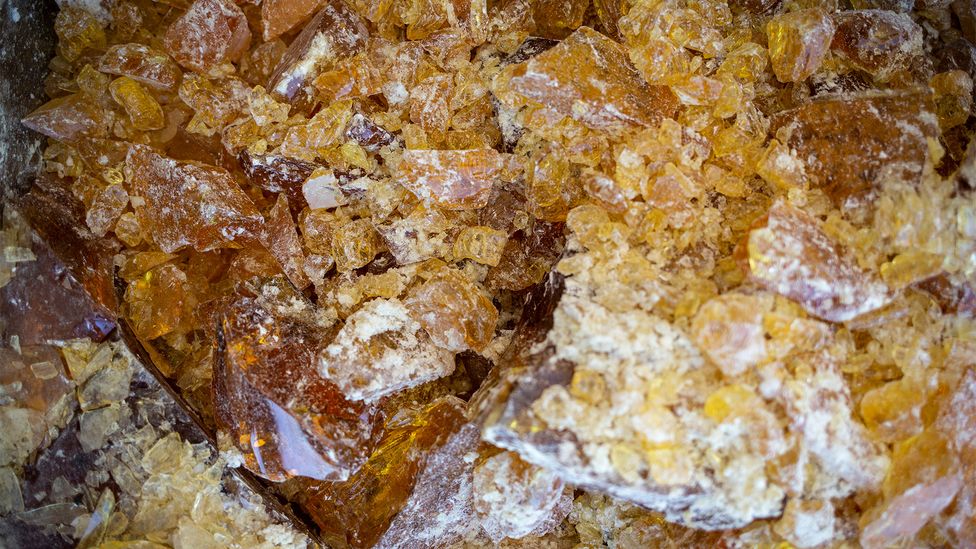
Some Spanish experts claim that pine resin could provide a viable alternative to petroleum (Credit: Susana Girón)
An eco alternative to oil?
According to several studies, at the current rate of extraction, the Earth's oil reserves are expected to run dry sometime after 2050. Yet, Blanca Rodríguez-Chaves, the vice dean of the faculty of law at the Autonomous University of Madrid and an expert in environmental policies, believes that resin could provide an adequate alternative. She maintains that most products made with petroleum – like, plastic, for instance, which is not bio-degradable – can also be made with resin and decompose more easily.
"Resin is the petroleum of the world today and in the future. The intention is that all uses of petroleum are replaced by resin," she said. "Plastics are already being made from resin. [It is used] in the cosmetic and pharmaceutical industry in addition to all its applications in construction or in the manufacture of varnishes and glues. The forest is the great supplier of renewable resources and energy that allows [us] to substitute petroleum products, and here the resin plays the main role."
Rodríguez-Chaves also believes that pine resin's untapped potential could mean big things for Spain. "Spanish resin is the highest purity in the world and, currently only Portugal and Spain are producing resin in Europe."
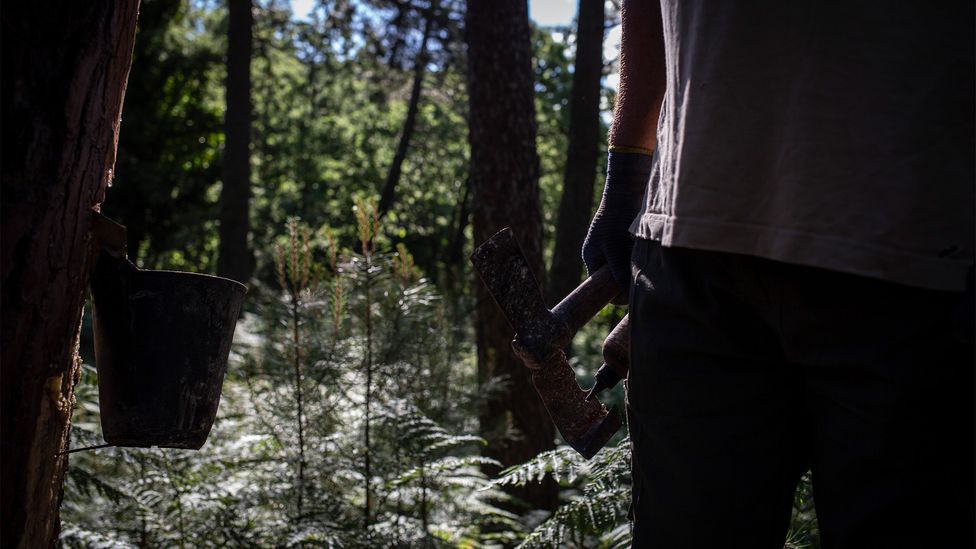
In Castilla y León, an estimated 80% of towns in 14 local provinces are considered "at risk of extinction" due to urban migration
Rural return
In addition to its environmental benefits, pine resin's proponents also believe it could offer a solution to Spain's rural exodus. According to a report by the Bank of Spain, 42% of the country's towns are affected by depopulation, as increasing numbers of young people leave the countryside to search for better job opportunities in the cities. This phenomenon is exacerbated in Castilla y León, where 80% of towns in 14 local provinces are considered "at risk of extinction".
Yet, because of the newfound interest in pine resin, some young people have recently started returning to the region in search of work. Guillermo Arranz is one of them. He lives and works in Cuéllar (Segovia) and is the fourth generation of resin workers in his family. "The pine forest is my office and [it gave me the] chance to keep working in the place where I was born. What I like most about my job is the freedom of not having a boss, and of course, the direct contact with nature and my people."
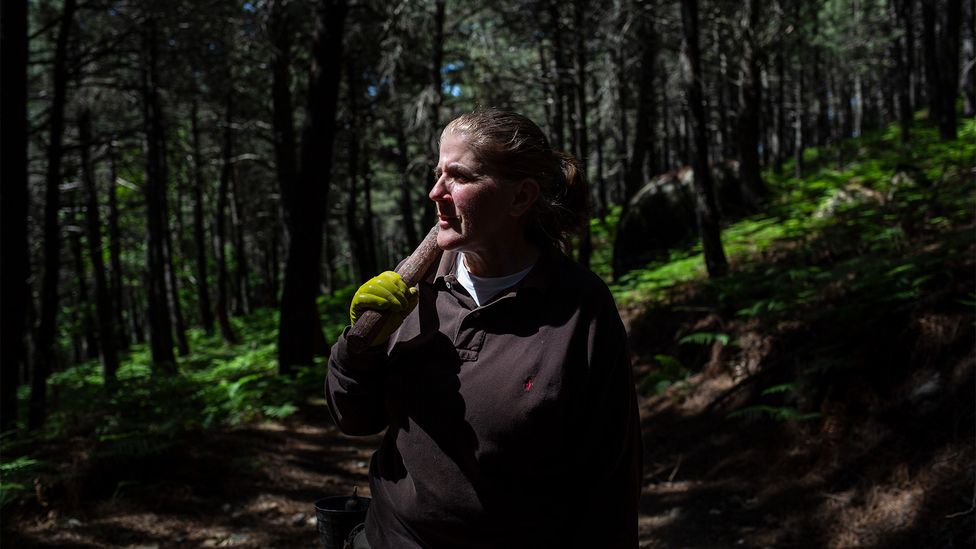
When Isabel Jiménez started extracting resin three years ago, men thought she'd only last a few weeks (Credit: Susana Girón)
"My kingdom"
Vicente Rodríguez, who works as a resin producer in his hometown of Casavieja and is one of roughly 30 resin producers in Ávila province, echoes Arranz's sentiments. "We are the] few ones [left]. People are still surprised when they see us resining the pines. They think that we are something of the past. But they do not understand that the future of these areas [are connected to] resin. I returned to my roots and the mountains because I like this."
Isabel Jiménez is one of the area's few female pine resiners. Given the toughness of the work, traditionally women have been limited to supporting tasks. "I still remember when I started extracting resin and men made jokes and bets on how many weeks I was going to last. And here we are still more than three years later. I am a physically strong woman. And I am here because, in addition to being a lifestyle for me and a source of income, this is my kingdom. My little piece of land on Earth."
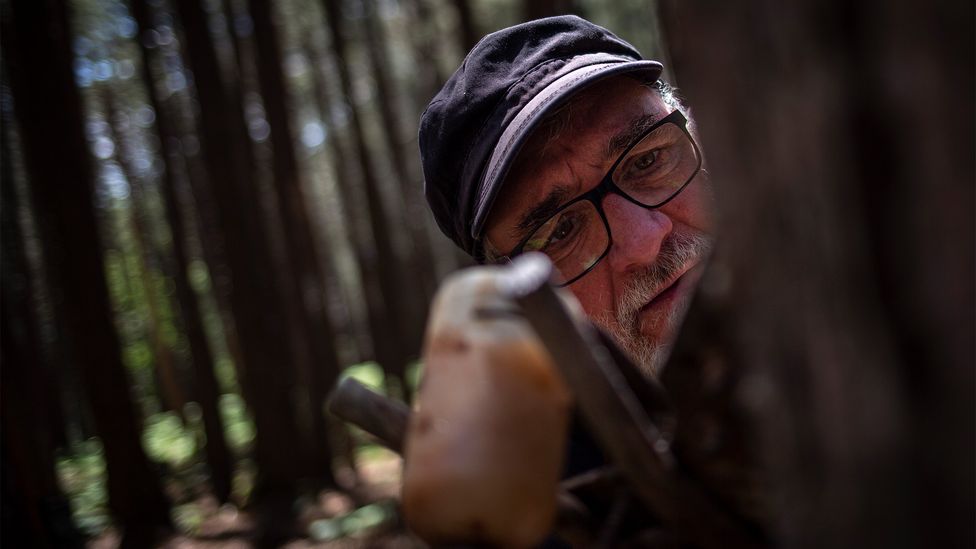
Roughly 95% of Spain's pine resin extraction takes place in Castilla y León (Credit: Susana Girón)
Autonomy in work
Today, roughly 95% of Spain's pine resin extraction takes place in Castilla y León, and Arranz and Rodríguez believe that the best way to preserve these ancient forests is to give greater control to the pine tappers themselves.
"The future is to allow resin producers to manage [their] own territory. If the government gave us aid in exchange for cleaning or monitoring the mountains, we would work the entire year and there would be many more resin workers willing to work the mountains that are not being [worked] yet," Rodríguez said.
By attracting more young people to live and work in these rural towns, Rodríguez believes the region could see an increase in ecotourism, with more companies offering guided forest walks and local museums holding resin workshops.
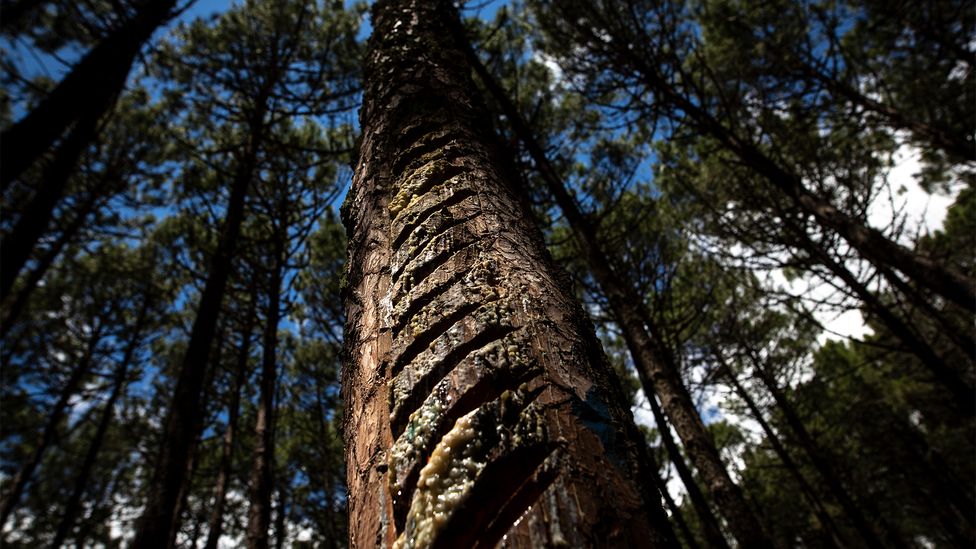
Today, there are a number of local museums dedicted to resin, as well as companies offering guided "Resin Routes" into the forest (Credit: Susana Girón)
Resin tourism
In order to help make this a reality, the resin-rich area of the Tiétar Valley (Ávila) has recently applied to become a protected Unesco Biosphere Reserve. There are also several museums in the area dedicated to resin, such as the Casillas Museum, the Nava de Oro Museum and the Oña Museum, where visitors can see the traditional heather huts where early resin workers slept, as well as ancient tools used to extract the resin.
There are also several companies that offer guided "Resin Route" tours from the local museums into the forest, allowing people to see the pegueras (kilns) where resin would be transformed into waterproof glue and experience what life was like for extractors.
On weekends, these leafy forests may be filled with the sound of footsteps of hikers who come to escape the bustle of nearby cities. But if you listen closely, you can still hear the drop-drop-drop of Spain's liquid gold as it falls into the pots hanging from the tree trunks.
---
Join more than three million BBC Travel fans by liking us on Facebook, or follow us on Twitter and Instagram.
If you liked this story, sign up for the weekly bbc.com features newsletter called "The Essential List". A handpicked selection of stories from BBC Future, Culture, Worklife and Travel, delivered to your inbox every Friday.

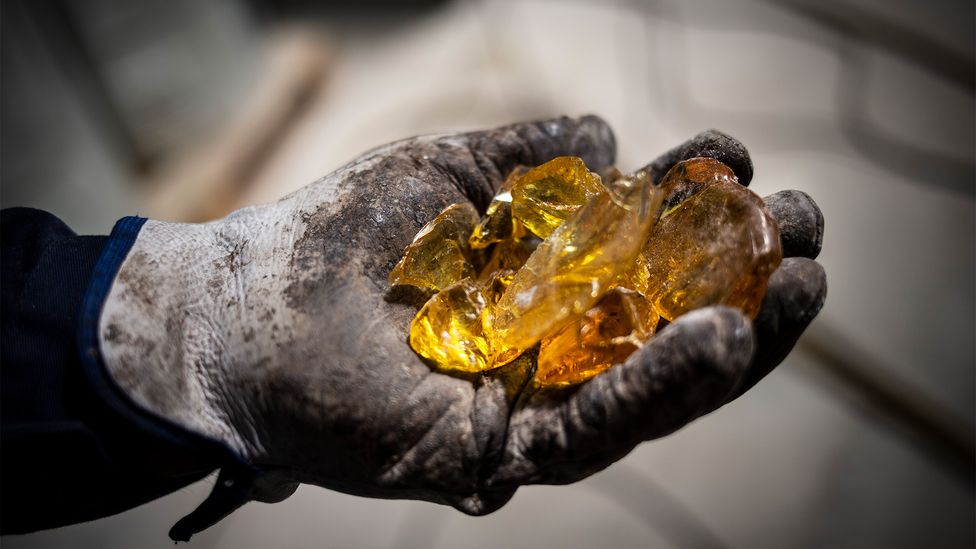
Post a Comment